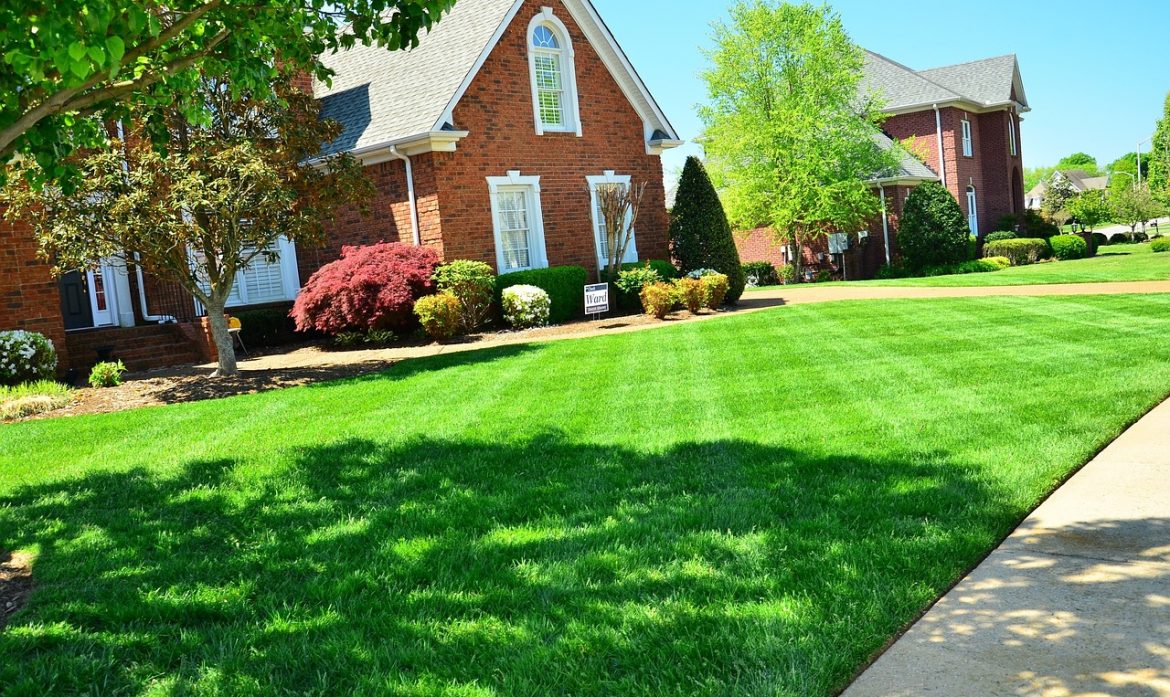Maintaining an attractive lawn not only requires lots of hard work and knowledge, but you need a system for wiping out those lawn invaders: weeds. And the good news is that, it doesn’t really matter if it’s late Spring or mid-Summer, you can still wage war on your grass.
Depending on the acreage of your lawn, you may decide to simply call a professional landscaper with existing greener grass systems. Having a weed-free lawn is a doable DIY project, however, if crabgrass, dandelions, and broadleaf weeds have taken over, professional services can pinpoint the type of weed, and extent of the problem. Not to mention, experts typically use a strong commercial herbicide that won’t damage grass roots.
Eliminating Common Weeds
Dandelions, thistles, clover, and ground ivy are the most common weeds in yards. But spend an hour spraying a store-bought herbicide, and within a couple of days you’ll notice the weeds will start to wilt. Unfortunately, there are hundreds of weeds, and they fall within three categories: broadleaf, annual grassy weeds or perennial weeds, and specific types of herbicides will target each group.
Killing Broadleaf Weeds
Before broadleaf weeds begin growing in the Spring, homeowners can apply a pre-emergent herbicide that stops them before they sprout. You’ll find many pre-emergent herbicides on store shelves, but if you decide to call commercial landscaper, discuss one that is a one-size-fits-all, and can last all year. Landscapers typically use commercial products that not only eliminate seeds before they sprout, but also can target some weeds that have just started to grow. These single applications are more of a magic bullet.
If it is late in the season, and you have some broadleaves that begin popping up, you can spot-treat with a post-emergence herbicide. For smaller lawns, you’ll probably want to choose a pre-mixed herbicide for spot-treatments. Spray the lawn only in temperatures below 80 degrees because herbicide can vaporize when it’s hot outside.
If you’re lawn has too many weeds that are scattered over large areas, it’s best to spray the entire lawn.
Crabgrass and Annual Weeds
Annual weeds will sprout from seeds every year. The weed dies late in the fall but leaves behind seeds to germinate the next spring. While crabgrass is the most notorious headache, there are others like nutgrass and yellow foxtail.
A common herbicide used is crabgrass preventer. It’s a pre-emergent herbicide used to kill seeds before they germinate. The best way to handle a few scattered grassy weeds is by spot-treating them, however, if you’ve waited too long and the lawn has been taken over by grassy weeds, spray the entire yard with post-emergence herbicide. Spray enough to wet the weeds, and they should begin to die within five days.
The Toughest Weeds to Deal With
Perennial grassy weeds return every year, and they’re the toughest to deal with. While killing these weeds, homeowners often end up damaging and eliminating grass. These weeds have deep, expansive root systems, that make it close to impossible to kill them. Of course, these grassy weeds can be killed, just like the other types, but it’s safer to use a spot-treat regimen.
The best solution to rid your lawn of perennial weeds is to identify them, then apply herbicide by hand (using gloved hands) to each patch of weeds. Spray the solution onto the gloves and rub onto the weed. This should be done early in season because during the summer roots will spread and so will these grasses. Herbicide is most effective before roots become sturdier. Once there are too many perennial grasses that have taken over, the only solution is to kill everything, mow, and start over.


Eliminating Weeds For A Greener Lawn – what a captivating title for a blog post! I must say, maintaining a lush green lawn free from pesky weeds is every homeowner’s dream. And you’re absolutely right in highlighting the importance of professional help in achieving this goal. Weed Control Company bring not just expertise but also specialized tools and techniques to tackle even the most stubborn of weeds. Their tailored approach ensures not just weed elimination but also the preservation of your lawn’s health and beauty. Investing in their services is indeed a wise decision for anyone looking to transform their lawn into a verdant paradise.